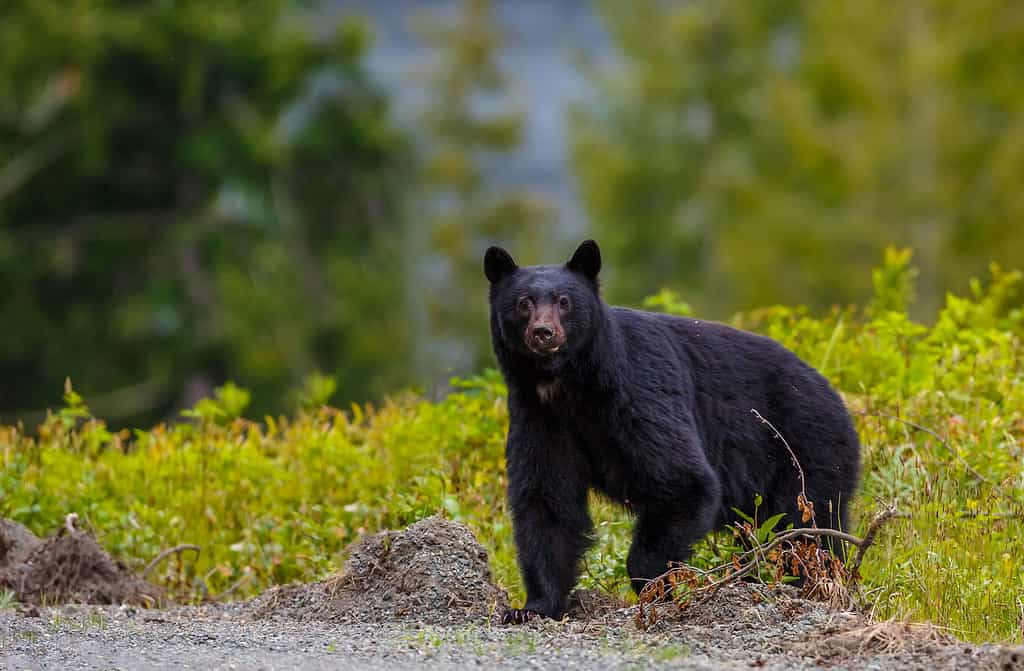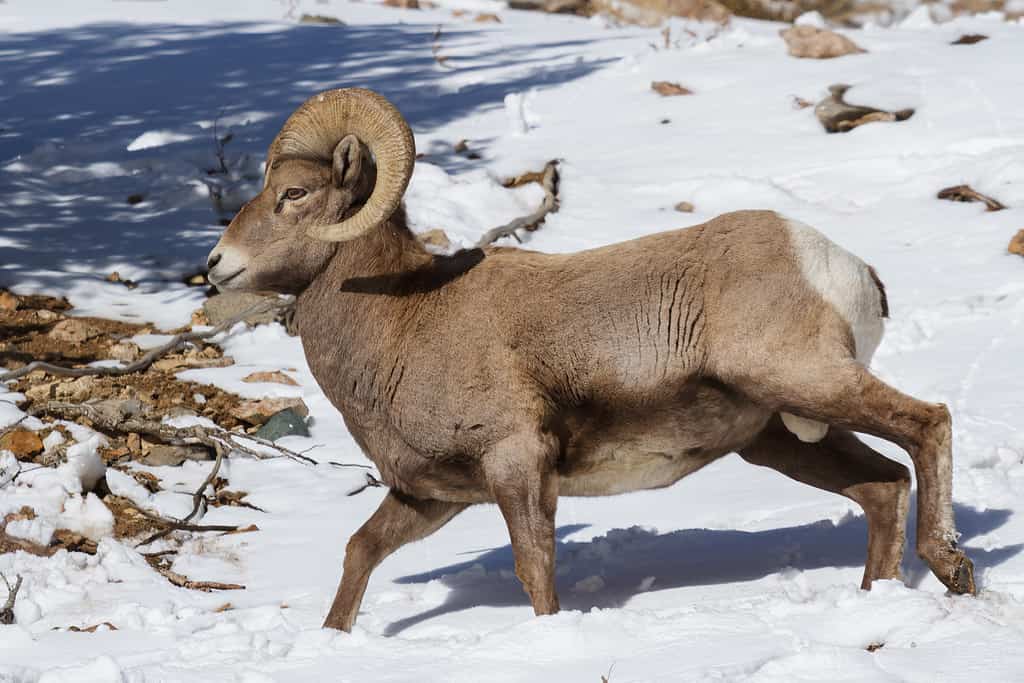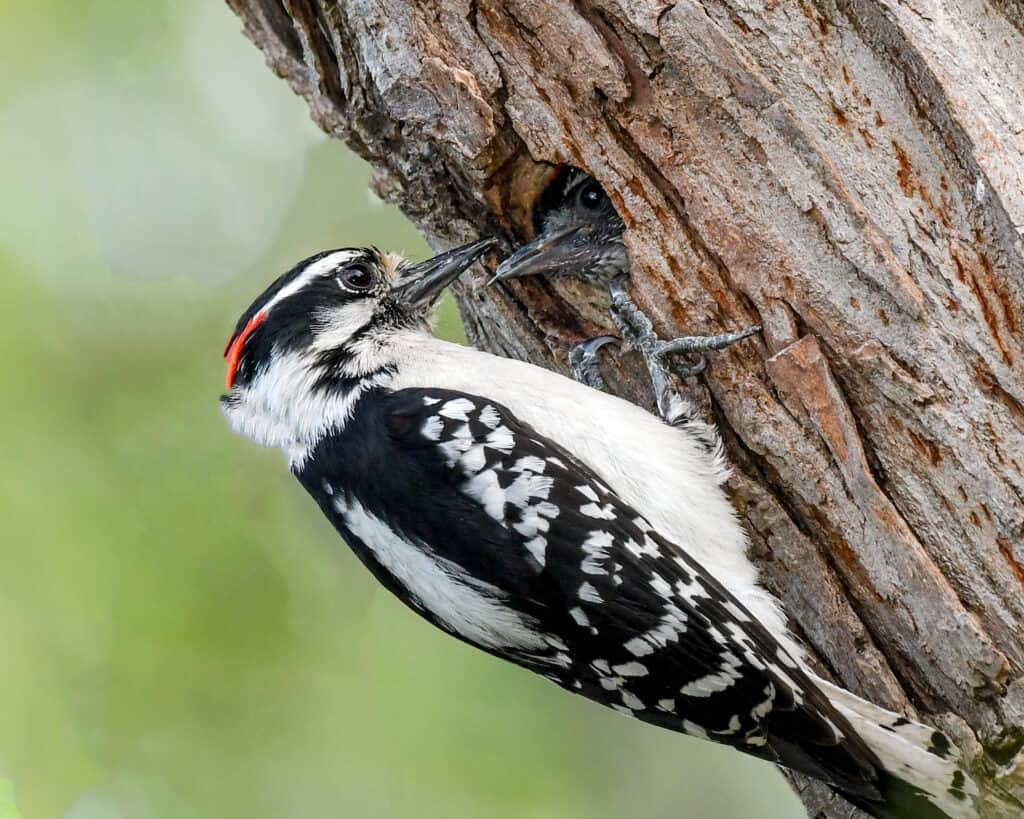New Mexico is a very beautiful mountainous state. New Mexico isn’t just known for its mountains and caves, but the amazing tunnels that go through them. One of the most iconic tunnels in the state is also the longest! Keep reading to discover the longest tunnel in New Mexico and the animals that live around it.
What is the Longest Tunnel in New Mexico?
The longest tunnel in New Mexico is the Gilman Tunnel. The south Gilman tunnel is 100 feet long and the north tunnel is about 125 feet long. While the length may not seem impressive, it’s the location that stuns many visitors.

The Gilman Tunnels are the longest in New Mexico.
©KevinCupp/Shutterstock.com
Where is The Gilman Tunnel Located on a Map?
The Gilman Tunnel claims the title of being the longest tunnel in New Mexico, consisting of a south tunnel measuring 100 feet and a north tunnel spanning approximately 125 feet. Although the tunnel’s length might not immediately impress, it is a remarkable location that leaves many visitors in awe.
Here is The Gilman Tunnel on a map:
About the Gilman Tunnels
The Gilman Tunnels are breathtaking and rich in history. These tunnels run through the Jemez Mountains and are within the Santa Fe National Forest. They are also called the Jemez Tunnels. Previously, the tunnels were used as railroad tunnels transporting lumber down the mountains. They were part of the former Santa Fe Northwestern Railway (SFNW). The tunnels were created by blasting the side of the mountain during the 1920s. They operated as railroad tunnels till 1941, however; it was already declining from the crash of 1929.
The beauty surrounding these tunnels is marvelous. If it looks familiar, it’s because the Gilman Tunnels have been featured in multiple films including The Scorch Trials, The Lone Ranger, and 3:10 to Yuma.
Can You Drive Through the Gilman Tunnels?
Bring your cameras, as the Gilman Tunnels are a must-see. If you’re visiting New Mexico, add the tunnels to your list. While they aren’t miles and miles long, it’s the views that you appreciate. The Gilman Tunnels are very high and provide an excellent view of the box canyon and the Jemez Mountains.
Although you can drive through the Gilman Tunnels, keep in mind that the road through the tunnels is narrow. Only one car can pass at a time, and not all cars are small enough to go through. After passing through, stop to the side and admire the beauty. While the tunnels are usually open, sometimes they close when there are falling rocks or poor road conditions. It’s most common for the tunnels to close because of heavy snow and ice from December to April.

You can visit the Gilman Tunnels in New Mexico, but it closes during poor road conditions.
©photoBeard/Shutterstock.com

Animals Around the Gilman Tunnels
Although it’s rare to see animals in the longest tunnel in New Mexico, many animals live in the surrounding area. The Santa Fe National Forest is biodiverse and animal-rich. This forest is over 1.6 million acres and offers great ways to see animals and plants in the wild. Your best chance of seeing animals in the forest is to hike a walking trail. Atalaya Trail #170 and East Fork Trailhead #137 are popular walking trails. Do you want to know what animals you may encounter while visiting the Gilman Tunnels? Keep reading to find out.
Golden Eagles
An animal you may encounter while visiting the Gilman Tunnels is the golden eagle. This large bird is found throughout the state, however, it’s more common from October to March. Golden eagles are great hunters and feed on small mammals, fish, and reptiles. They mainly hunt during the day, but experts have observed them feeding an hour before sunrise to one hour after sunset.
Golden eagles have long and sharp talons. They also have massive wingspans up to 7 feet and 8 inches long. Despite their massive size, they are agile birds and the smallest subspecies weigh about 5.5 pounds. Interestingly, golden eagles, unlike bald eagles, are silent birds. Although golden eagles are mostly silent, they communicate with offspring with quiet calls and are most vocal while nesting.

Golden eagles are quiet birds.
©Vladimir Kogan Michael/Shutterstock.com
Black Bears
While black bears are found in New Mexico, they aren’t a common sight, especially for hikers. In New Mexico, there are about 5,000 to 6,000 black bears. Although black bears are large and can weigh over 300 pounds, they are small compared to grizzly bears. Black bears have stocky bodies and short tails. They aren’t picky eaters and mainly consume vegetative matter. However, their diet varies depending on their location. For example, black bears near rivers hunt for fish.
Despite their name, black bears aren’t entirely black. Instead, some black bears have light brown or ‘cinnamon’ coats. These large animals live in isolated forests but are more and more common in urban areas because of overdevelopment. As their homes are destroyed, black bears wander into neighborhoods looking for food. Although not regarded as aggressive, you should never bother a black bear.

In New Mexico, there are about 5,000 to 6,000 black bears.
©Menno Schaefer/Shutterstock.com
Rocky Mountain Bighorn Sheep
The next animal on our list is the Rocky Mountain bighorn sheep. In 2020, experts estimated there were about 1,700 Rocky Mountain bighorn sheep in New Mexico. These sheep are mainly associated with the Rocky Mountains. They are wild sheep native to North America with large curved horns. The thick horns are heavy, weighing up to 30 pounds. Rocky Mountain bighorn sheep use their heavy horns to fight and defend themselves.
Currently, there are seven bighorn sheep subspecies found throughout western parts of North America down to Mexico. Although they are listed as the least concern, numbers are down since before unregulated hunting and habitat destruction.

In New Mexico, there are about 1,700 Rocky Mountain bighorn sheep.
©iStock.com/Gary Gray
Downy Woodpeckers
Most of the animals you’ll encounter while visiting the longest tunnel in New Mexico are birds. One of the most beautiful birds in the area is the downy woodpecker. They are permanent New Mexico residents and are among the most common bird species n the state.
Downy woodpeckers have checkered wings and a striped head. Males have a bright mark on their nape, while females have a black mark. Downy woodpeckers are small, usually weighing less than one ounce. They are about 5 to 7 inches long. Downy woodpeckers peck wood to find food and build a shelter. Although they consume berries, the bulk of their diet comprises insects. They mainly live in tree cavities. Downy woodpeckers are more commonly spotted in trees in forested areas.

Downy woodpeckers mainly eat insects and are permanent New Mexico residents.
©Brent Barnes/Shutterstock.com
Thank you for reading! Have some feedback for us? Contact the AZ Animals editorial team.








